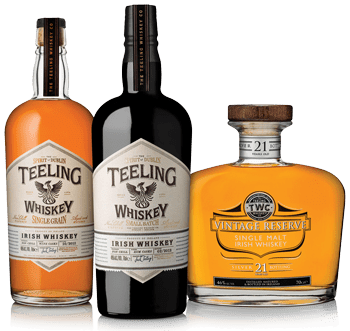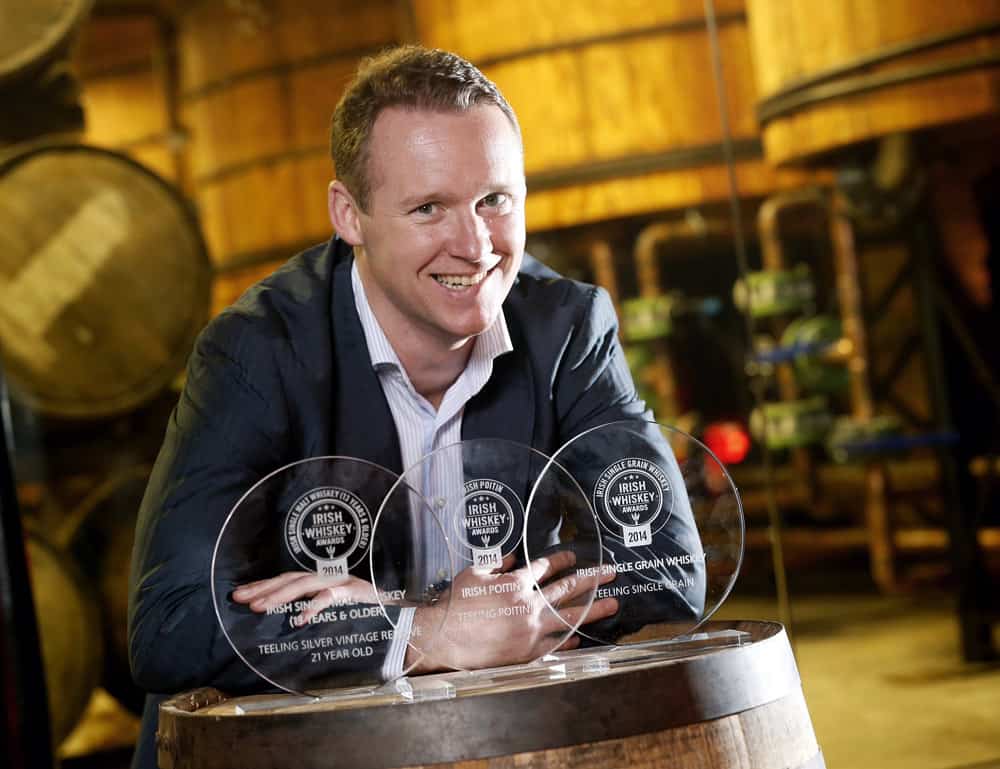Jack Teeling talks to Niamh Mac Sweeney about the growth and performance of the whiskey industry.
Q: How is the whiskey industry preforming in Ireland?
The domestic market for Irish whiskey has significantly underperformed over the last 10 years – however, the tide is definitely turning. Consumers tend not to drink what their parents drink and due to our long association with Irish whiskey it was for many years perceived as an ‘older’ person’s drink.
However, there is a new generation of Irish people re-discovering Irish whiskey and catching up with the rest of the world in terms of their enthusiasm for our domestic spirit.
The success of Irish whiskey in markets like the US, along with the movement away from trendy white spirits to authentic brown spirits with provenance, has made Irish whiskey exciting again. During the recession a lot of the pubs and restaurants in Ireland had to up their game in terms of their offering by creating an experience people were willing to pay for. This meant many accounts expanded their spirits offering and educated their bar staff, giving us an opportunity to present a new voice and offering to the Irish whiskey category in our domestic market.
Q: Why is Irish whiskey undergoing a such a revival at the moment?
Everything is cyclical and it is Irish whiskey’s turn to shine. Irish whiskey for decades (from the 1930s-1990s) was in the doldrums, while scotch whisky stole our thunder. We dropped from having 60% of the global exports of whiskey during the golden days of the 19th century to just 2% by the middle of the 20th century. However, since the 1990s Irish whiskey has turned a significant corner. The US has been the real star in the rejuvenation of Irish whiskey, enjoying high double-digit growth from the early 1990s. Irish whiskey has now infiltrated US popular culture with product placement in the likes of Mad Men and The Wire. Irish whiskey has become the fastest-growing spirit in the world in the last 20 years.
Q: How innovative is Ireland compared to the global distilling competition?
Distilling in Ireland was for a long time controlled by only one producer and in recent times was still governed by only a handful of producers. This has traditionally led to a very insular approach to the development of Irish whiskey compared to other categories such as Scottish whisky, which due to the vast numbers of producers has had to be more innovative in terms of production and packaging to make them stand out from the crowd. In recent times, American whiskey has been leading the charge in terms of small-batch innovative bottlings.
However, things are beginning to change. There is a great opportunity to introduce new and unique expressions of Irish whiskey that can lead to the expansion of the category and create a ladder of different bottlings to ensure that as people’s taste evolves, Irish whiskey has a full range of offerings to enable them to stay within the category. This is where smaller independent producers can bring a lot to the table.
Q: How was Teelings Whiskey established and what is the driving force behind its growth?
I set up the Teeling Whiskey Company in 2012. Over the last four years we have become the leading independent Irish whiskey company, producing a range of unique and differentiated award-winning Irish whiskeys and driving segmentation of the category.

The idea for the Teeling Whiskey Company was formed during my travels around the world selling and promoting Irish whiskey during my Cooley Distillery days. I saw first-hand the growing trend for craft beer and spirits as well as the trend towards urban-based breweries/distilleries. This was very apparent in key markets for Irish whiskey in the US, such as Brooklyn and San Francisco.
This planted a seed in my head that if I was ever starting up my own Irish whiskey company I would look to develop a unique premium expression of Irish whiskey which looked and felt like other premium craft spirits rather than a traditional Irish whiskey, and more importantly I would bring whiskey distilling back to Dublin.
Dublin has more provenance and history in whiskey distillation than any other urban location and back in the 19th century, when Irish whiskey was the largest whiskey category in the world, it was driven by large world-class distilleries in Dublin. Unfortunately, the last Dublin distillery shut its doors in 1976 so it became crystal clear to me that if it makes sense to open a craft whiskey distillery in London or New York, there must be a great opportunity to revive distilling in Dublin.
Irish people are catching up with the rest of the world in terms of their enthusiasm for our domestic spirit
Q: Why has Teelings been a success?
Irish whiskey is dominated by multinational players such as Pernod Ricard, Beam Suntory and William Grants. For us to try to compete directly against the large brands of Irish whiskey would be setting ourselves up to fail.
As such, we focus on creating clearly differentiated expressions of Irish whiskey which do not have any direct comparison in terms of taste or flavour, thus hopefully helping the category expand rather than take sales from other Irish whiskey producers. We consider our competitive set to be wider than traditional Irish whiskey as we also compete against other premium craft spirits. This throws out its own challenges but also opens up an even greater opportunity.
As a whiskey producer, we focus first on making a different whiskey. From the start, we have been innovating using proprietary cask maturation techniques to impart unique flavours through the use of rum, cabernet sauvignon/white burgundy wine casks, etc. However, there is no point having a unique whiskey unless your packaging reflects this, and we have gone with an old traditional dark-style bottle with a modern label to ensure it stands out on the shelf. From our whiskey, packaging, story and pricing, we are clearly delineated from the majority of other Irish whiskeys, thus allowing people to discover something different.
Q: What’s the best advice you got when you started?
Be decisive. As a leader or manager people come to you for a decision. Don’t be afraid to make a decision with all the best information available.
Q: How important are marketing, branding and story to overall success?
As a small company operating in a multinational-dominated industry we have to box smart when it comes to marketing. We have focused from day one on getting our story out there in the form of PR and social media. We have been lucky that people have been very supportive and interested in our journey, so we have managed to generate a lot of awareness around what we are doing.
We can never match the above-the-line consumer marketing spend of some of the larger players; however, social media has somewhat levelled the field and we have actively invested in this.
This has allowed us to cut through the various layers created by our route to market by allowing us to have direct conversations with our target consumers. This hopefully prevents our message getting lost, allows people to discover us online and ensures continually consistent communication.
Q: Do you have new goals and objectives for the coming years?
This year is a key for us in terms of solidifying our relationships with our distribution partners around the world. In particular, a key focus is on developing our presence in the US market. We have four brand ambassadors now in place (two on the east and two on the west) along with a significant investment plan with our US importer so we are hoping to make some significant in-roads in this key market over the next twelve months.
In terms of production and our visitor experience, 2016 will be our full year of operation and we are increasing our production significantly as well as increasing the range of our whiskey we are currently distilling. Coupled to this, we are hoping to welcome over 75,000 visitors through the distillery – which brings its own challenges as well.
Q: What next for the brand?
Building our new distillery is not the final destination. We are still only at the start of a long journey. This industry is definitely not a sprint but more like a marathon so we will continue to do what we believe to be the right things and hopefully help with the evolution of Irish whiskey. We hope that our new distillery integrates itself into the fabric of Dublin culture and society as well as becoming a high-quality addition for any visitor to our city.
Teeling Whiskey’s new distillery located in Newmarket, Dublin 8

